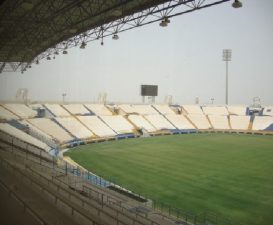Remember the good old days when it took decades to build major monuments? Historians estimate that 30 years passed before the back-breaking pyramids of Giza came to glory, for example, and more than a century after construction began in 1882, La Sagrada Familia in Barcelona is still not finished.
Although laborers might disagree, there’s something honest about the kind of construction that requires slow extraction, transportation and re-assembly of the earth’s materials – especially compared to our current obsession with erecting buildings as fast as possible. In China, a 15-story building was supposedly built in a record-breaking six days.
Fortunately, not all people are beguiled by speed. We recently visited the renowned Kibbutz Ne’ot Semadar and talked to one of its founders about their iconic, passively-cooled community arts center that took 15 long years to build. Step-by-step, a group of like-minded nature-lovers learned the skills necessary to construct a landmark, structurally-sound earth building in the heart of Israel’s Negev desert.
Our guide Dalit was one of the original six people who decided, 23 years ago, to close up shop in Jerusalem and build a sustainable, creative and conscious community in the middle of the desert. While such communities are increasingly common now, at the time this was a very bold move. And it wasn’t easy.
To begin with, the Israeli government wasn’t so keen on approving a building made of earth.
“At the time, adobe construction was not considered normal,” Dalit explained. “So we built the interior walls using earth and used concrete on the outside.”
Nobody knew how to build an earth building or grow food in the middle of nowhere, but the will to succeed was strong.
“It took two years just to learn how to build the floor,” said Dalit. While one can imagine that these were hard, hot and difficult years, our guide spoke wistfully about the spiritual benefits of this kind of cooperation.
“You learn how human beings an cooperate and you get to know your soul very deeply,” our guide told us. “At first we kept the glates closed, while we were still learning, but then we opened them to visitors. It’s very delicate here, so we had to prepare for them.”
Many of the members traveled far to learn about earth construction, including Egypt, and an engineer was brought in to ensure that the crafts center was strong.
In addition to 40 cm thick adobe walls that provide excellent insulation and trap heat in cold winters, the building has a unique pastel-colored mosaic cladding that features penguins, peacocks, and other tributes to the natural world, along with a 46 meter tall wind tower that naturally cools the entire center.
Despite the hot desert sun, the temperature inside the building was very comfortable.
Almost all of the materials used for the structure were gathered locally and slowly. Inside the gallery there are images depicting how the team built mud bricks by hand. Dalit called the process primitive, but we call it sustainable.
“We each put our energy into the building. But in the end the energy of the building is larger than the sum of our energies. It has become the energy that moves us forward.”
For more information about Ne’ot Semadar, please visit their website. Visits can be arranged in advance and the nearby cafe sells and serves locally-grown organic food that will warm your heart and soul. All images via Tafline Laylin for Green Prophet.








